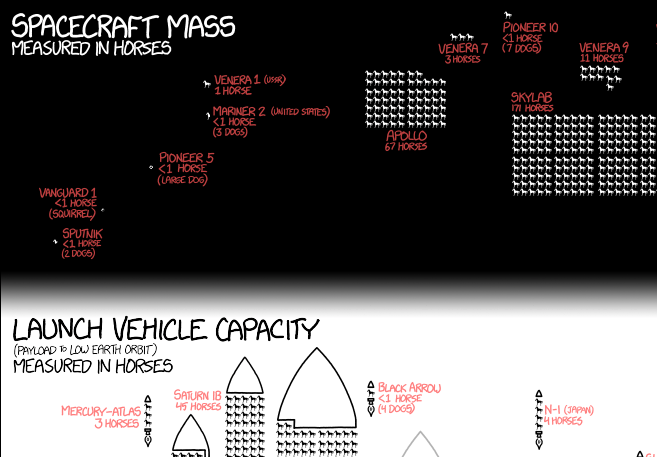The challenge with thinking about space is putting it into terms that we can understand. How far is a light-year? Just how powerful is NASA's next-generation Space Launch System, which the agency hopes will bring astronauts out into the solar system?
Luckily for us, the comic xkcd is a regular contributor to making space understandable, and the latest comic from Randall Munroe is a gem -- explaining launch vehicle capacity and spacecraft mass in terms of horses.
So now comparisons are fairly easy. At the left of the diagram, for example, you can see the Saturn V -- that rocket that was the first stage of bringing astronauts to the moon in the 1960s -- carried the equivalent of 262 horses. The SLS Block 2, if it is ever developed, will have a slightly larger capacity of 289 horses.
[caption id="attachment_114199" align="alignnone" width="425"]
Blastoff of NASA's Space Launch System (SLS) rocket and Orion crew vehicle from the Kennedy Space Center, Florida. Credit: NASA/MSFC[/caption]
Meanwhile, the spacecraft mass of the International Space Station is an astounding 932 horses, the total shuttle mass was 206 horses, and Apollo was 67 horses. There also are a few robotic spacecraft in there, such as Voyager, Vanguard 1, the Keyhole 3 spy satellite, and the upcoming James Webb Space Telescope.
Check out the entire
diagram in large here
, and the
original comic here
. (For those unfamiliar with xkcd, make sure to mouse over the comic for an extra joke.)
 Universe Today
Universe Today
